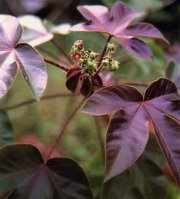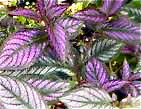Among Amazonian mestizos, the term saladera refers to a persistent run of bad luck and misfortune — in family matters, business, and human relationships — often accompanied by great anxiety. This sickness is parallel to the Mexican sacalio, and it is treated the same way: by bathing.
Saladera is invariably caused by sorcery. It is believed to manifest as salt on the skin — to be salada is to be salted — and a bath washes it away; indeed, sometimes the term sal, salt, is used as a synonym for sorcery. Thus, too, saladera is generally not treated by sucking out pathogenic objects, such as darts, projected into the body, but rather by baths alone.
The sahumerio, steam bath, is used specifically for removing such brujería. The steam bath is applied by having the patient sit in a chair, naked, wrapped in a blanket or poncho. Water with plants in it is heated almost to a boil, the bucket of steaming hot water is placed beneath the chair and inside the hanging blanket or poncho, and the steam allowed to rise. Steam can also be applied to the face and head the same way, with a towel or cloth draped around the head, while the patient bends over a basin of steaming water.
Among indigenous peoples of the Upper Amazon — Shipibo, Anáshinka, Matsigenka — a practitioner called a vaporadora, almost always a woman, makes use of a similar sort of herbal steam bath. Vaporadoras are not shamans, but are rather like parteras, midwives, or hueseros, bonesetters — medical specialists who do not use sucking and blowing tobacco smoke in their practice.
This steam therapy is practiced by putting red-hot rocks or axe heads into a pot with water and herbs, and then having the patient squat over the pot wearing a cushma, which keeps the steam inside, like a tent. Aftewards, the vaporadora examines the herbs remaining in the pot, and often finds some pathogenic object — a nail, a thorn, a piece of bone or charcoal — that was expelled from the patient. “With my medicine I soothe the patients,” says Susana Avenchani Faman, a vaporadora. “Through the spirit of the leaves that are boiled for steam, the patient will be calmed.”
 |
| Piñon morado (Jatropha gossypifolia) |
My teacher doña María Tuesta was something of a specialist in steam baths. The plants she used were almost always plantas brujas, sorcerer plants. These plants are often called morado, with leaves that are either literally purple or otherwise dark in color — for example, piñon morado (Jatropha gossypifolia), shown right, and patiquina morada (Dieffenbachia spp.), shown below. These plants are among those used by sorcerers to inflict harm, and therefore are most powerful for healing and protection. It is also possible to buy prepackaged sahumeria bundles at the herb market in Belén in Iquitos.
Sometimes the expulsion of a pathogenic object during a steam bath can be quite dramatic. Doña María told me how she had once treated a very sick woman, very thin and pale, she said, very debilitated. When doña María looked at the woman, she heard a voice speak clearly in her ear: “This woman has an animal in her womb, because of sorcery.”
 |
| Patiquina morada (Dieffenbachia spp.) |
Now, a woman having an animal in her womb is not that unusual a diagnosis among mestizos. Pablo Amaringo tells of a woman who had the larva of a boa implanted in her womb. Anthropologist Jean-Pierre Chaumeil kept a calendar of the healing activity of Yagua shaman José Murayari for two months, during which time the shaman healed two cases of animals in the womb, both involving mestizo women. Doña María asked the woman how long she had been sick; three months, the woman replied. “We have to take this animal out of your womb as soon as possible,” María told her, “because it comes from sorcery.”
What the plant spirits reveal is not so much a diagnosis as an etiology. In this case, the woman’s husband had been having an affair with another woman, had left his wife for his mistress, and wanted nothing more to do with his wife or their children — not an uncommon story, even outside the Amazon. Still, in this case the mistress was using sorcery to get rid of her rival. What the woman needed was an arcana, protection, from the sorcery of her husband’s mistress. So doña María prepared a sahumerio, containing green and purple patiquina to fight the sorcery, and other powerful plants to drive out the animal — catahua (Hura crepitans), a laxative; guaba (Inga edulis), a diuretic; hot chili pepper; and the commercial disinfectant Creolina.
While the plants and water came to a boil, doña María blew tobacco smoke into the woman, for protection, through the crown of her head. She had the woman strip, except for a skirt around her waist, and squat over the steam, with her legs open, as if having a baby, just for a few minutes, because the woman was so weak. Doña María began to sing an icaro, and the sorcery left the woman’s womb through her vagina, like a cohete, a rocket — whoosh! pung!, says doña María, illustrating. The sorcery looked like a white rabbit — a flash of something like cotton, and then a gush of blood. “What? What?” the woman cried out, and then they began to pray together, thanking God for the healing, while blood rushed from the woman’s vagina.
Doña María blew more tobacco smoke into the woman’s body, sealed her hands and forehead with drops of camalonga, and made the woman a hot drink of oregano and arnica, to seal her womb. Six days later the woman returned; although the woman had no money, doña María continued to treat her. “Don’t think bad thoughts about your husband and his girlfriend,” she told the woman. “They will get paid back for what they did.” And she allowed the woman to pay her with her prayers. A year and a half later, the woman came to doña María with some money, but she refused to accept it, telling the woman to use the money to take care of her children.

- Previous Post: Suri
- Next Post: Plants and Spirits
- More Articles Related to: Indigenous Culture, Plant Medicine, Sacred Plants, Shamanism, The Amazon


